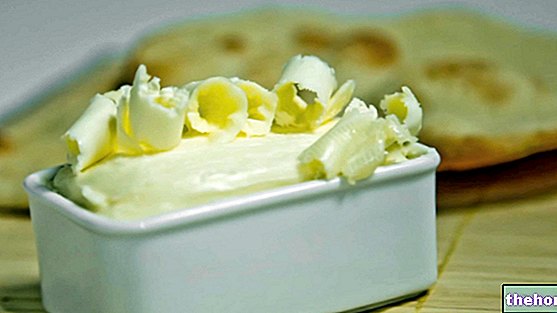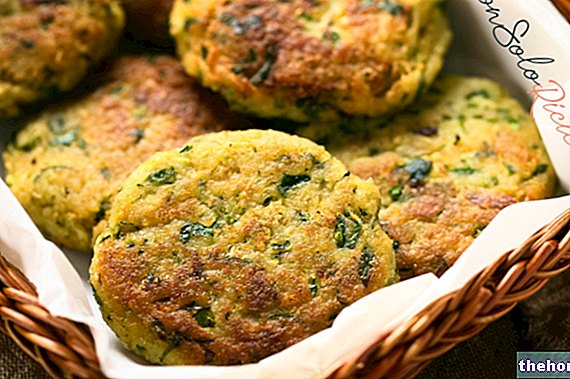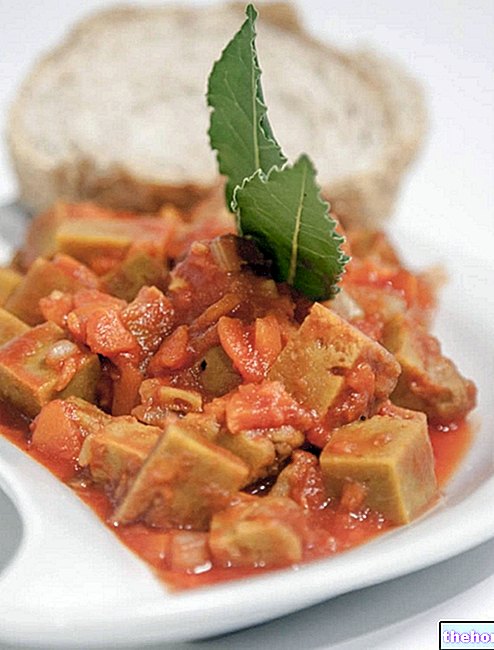Today we will have a lot of fun in the kitchen preparing ricotta at home!
Well, in reality it is not a "real ricotta", but a very simplified version! The original ricotta is prepared with the residual whey from the cheese, and is called so precisely because the whey undergoes a double cooking. The starting ingredient of the ricotta that I propose today is not the whey, but simple cow's milk, which we will curdle with vinegar! Let's see the ingredients!
Video of the Recipe
Problems with playing the video? Reload the video from youtube.
Identity Card of the Recipe
-
Ingrediants
For about 250 g of cottage cheese
- 2 liters of UHT whole milk or pasteurized whole milk
- 4 tablespoons (40 ml) of rice vinegar
- 2 tablespoons (20 ml) of vinegar
- Q.b. of salt
Materials Needed
- Fuscella
- Dishcloth
- Sieve
- Skimmer
- Food thermometer
- Wooden spoon
Preparation
- Pour the whole milk into a saucepan and bring to 80 ° C.
- In the meantime, line a colander with a clean cloth, then arrange everything on top of a bowl.
- When the milk reaches the temperature, slowly and little by little pour in the rice vinegar and white wine vinegar.
The alternatives Ok
As an alternative to rice and wine vinegar, you can use lemon juice (4 tablespoons) or 20 g of citric acid dissolved in a little warm water. It is advisable not to use only wine vinegar to prevent the ricotta from having a taste excessively acidic: the rice vinegar, being more delicate, will not affect the flavor of the ricotta.- Continue to mix with a wooden spoon: you will notice the formation of white clots. As they emerge, take the cottage cheese with a slotted spoon and gather them in the cloth placed over the colander.
- Proceed in this way until you no longer notice any flakes in the milk.
Why is curd formed?
The curd is formed thanks to a combination of two elements: heat and acidity. The high temperatures facilitate the coagulation of the whey-proteins, while the low pH (given by the vinegar) favors the coagulation of the caseins.- Allow the ricotta to drain into the cloth, avoiding excessive pressure: the ricotta must not be too dry.
- At this time, salt the ricotta to taste, and mix to distribute the salt evenly: the ricotta will take about 5 minutes to drain.
- At this point, remove the ricotta from the cloth with a spoon or a ladle and, for a better presentation, put it in a mold.
- Press gently to give the classic ricotta shape, then turn the fuscella upside down.
- The ricotta is ready: you can taste it hot or leave it to cool in the fridge and serve cold.
- Ricotta can be kept in the fridge for 2-3 days. Freezing is not recommended.
Alice's comment - PersonalCooker
Homemade ricotta, in its simplified version, is delicious when tasted cold, perhaps with a teaspoon of honey or barley malt. But you know, I also like it hot, freshly made. Try it: it's delicious!
And if you are not fond of animal milk, try the vegetable ricotta with soy milk!Nutritional values and Health Comment on the recipe
ATTENTION! Due to the impossibility of quantitatively estimating the solid portion obtained (as well as the liquid portion in excess), the nutritional details of the food will not be mentioned alongside.
The fake ricotta should be a medium energy food, with a caloric intake mainly attributable to proteins and lipids, while carbohydrates play a less crucial role. Fatty acids should be mainly saturated, cholesterol relevant and fiber absent.
La Finta Ricotta is suitable for most diets (including lacto-vegetarians), with the exception of lactose intolerant and vegans. In case of hypercholesterolemia and overweight it is advisable to reduce the quantities. The average portion is around 70-150g.




























